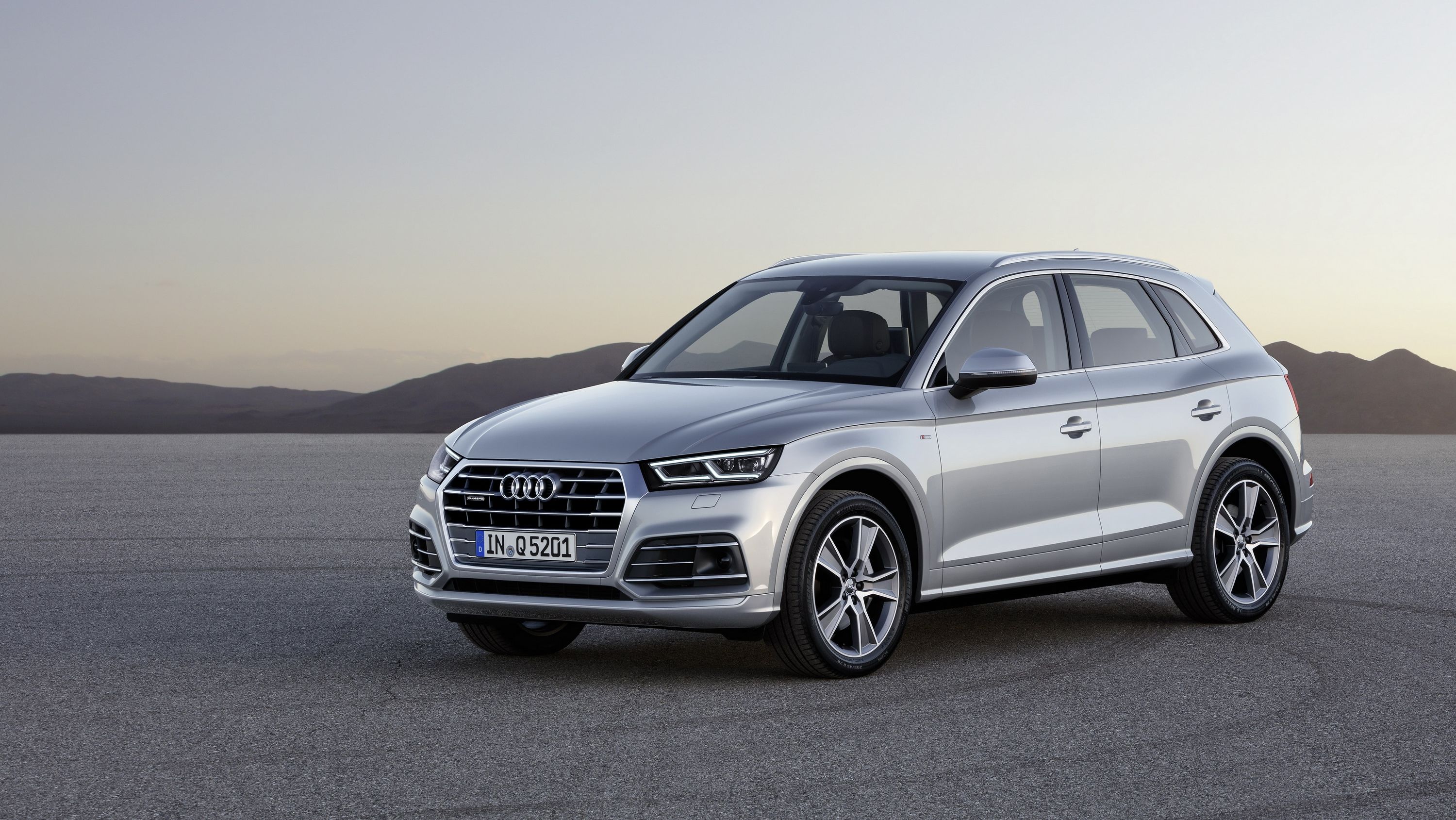Quick! Which Audi model just got a reduced curb weight, bump in engine output, and a few updates to its legendary, motorsport-derived AWD system? Surprisingly, I just described some of the new stuff on the German brand’s compact SUV, a.k.a. the Q5.
First up, thanks to the utilization of materials like high-tensile strength steel and aluminum in the body, the Q5 cuts upwards of 200 pounds from the curb weight, depending on the trim level. And that’s on top of an increase to the Q5’s exterior dimensions, by the way.
Next up is the drivetrain, where we see the inclusion of something called “ultra technology” to the quattro AWD system. Equipped as standard on models sporting a 2.0-liter TDI oil burner (and offered as an available option on the 150-horsepower diesel trim), ultra tech essentially ups fuel mileage by disengaging the rear axle while cruising, transforming the Q5 into a front-wheel driver. The rear axle will then automatically reengage when more traction is called for, making for a nice mix between FWD efficiency and AWD grip. No word yet on whether or not U.S.-spec models will get ultra technology, but it’s doubtful considering the only engines offered here will be the gas units.
Further AWD upgrades include torque vectoring tech, new driving modes for a little soft-roader action, and a sportier rear differential for models equipped with a diesel V-6 engine.
Speaking of engines, Audi says it’s making the various powerplant options both more powerful and more efficient. There will be four TDI specs and one TFSI engine on the table, but again, don’t expect the diesels to make it to these shores (thanks, Dieselgate). All in all, we can expect up to 27 extra ponies, plus a substantial increase to mpg. The 2.0-liter turbocharged gas burner, for example, will produce 252 horsepower (up from 220 horsepower) and return nearly 35 mpg (up from 27 mpg on the highway).
Continue reading for the full story.
Why It Matters
Right off the bat, I gotta say this – 200 pounds off the Q5’s curb weight might seem like a lot (and on a normal car, it is), but on a crossover as big and heavy as this (the current Q5 is around two tons), it’s not as big a reduction as you might think. Still, to be able to cut that much while still increasing the exterior dimensions is pretty impressive. And hey, at least it’s not getting any heavier.
Which brings me to my second point – it appears as though the Q5 is moving towards a more car-like demeanor. Better efficiency thanks to ultra technology and better acceleration thanks to a more efficient engine are the sorts of characteristics you’d expect from a sedan, and I’d wager that the average crossover buyer is starting to see the light when it comes to the drawbacks associated with a larger SUV body style.
Either way, look for the second-generation Q5 to go on sale sometime early next year.

